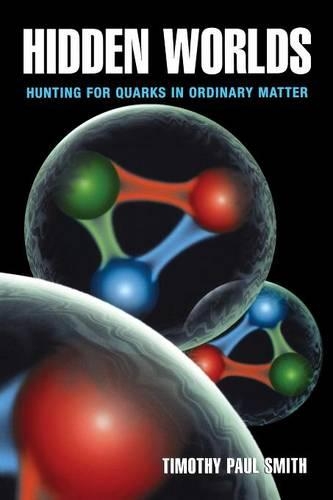
Hidden Worlds: Hunting for Quarks in Ordinary Matter
(Paperback)
Publishing Details
Hidden Worlds: Hunting for Quarks in Ordinary Matter
By (Author) Timothy Paul Smith
Princeton University Press
Princeton University Press
7th June 2005
United States
Classifications
Professional and Scholarly
Non Fiction
Nuclear physics
Quantum physics (quantum mechanics and quantum field theory)
539.72167
Physical Properties
Paperback
192
Width 152mm, Height 235mm
28g
Description
No one has ever seen a quark. Yet physicists seem to know quite a lot about the properties and behavior of these ubiquitous elementary particles. Here a top researcher introduces us to a fascinating but invisible realm that is part of our everyday life. Timothy Smith tells us what we know about quarks--and how we know it. Though the quarks that make science headlines are typically laboratory creations generated under extreme conditions, most quarks occur naturally. They reside in the protons and neutrons that make up almost all of the universe's known matter, from human DNA to distant nebulae, from books and tables to neutron stars. Smith explains what these quarks are, how they act, and why physicists believe in them sight unseen. How do quarks arrange themselves What other combinations can nature make How do quarks hold nuclei together What else is happening in their hidden worlds It turns out that these questions can be answered using a few simple principles, such as the old standby: opposites attract.With these few principles, Smith shows how quarks dance around each other and explains what physicists mean when they refer to "up" and "down" quarks and talk about a quark's color, flavor, and spin. Smith also explains how we know what we know about these oddly aloof particles, which are eternally confined inside larger particles. He explains how quark experiments are mounted and how massive accelerators, targets, and detectors work together to collect the data that scientists use to infer what quarks are up to. A nonmathematical tour of the quark world, this book is written for students, educators, and all who enjoy scientific exploration--whether they seek a taste of subnuclear physics or just wonder about nature on the smallest of scales.
Reviews
"Smith gives us a series of extremely readable and well-chosen analogies to explain the science. His relaxed style makes for an enjoyable read... [A] useful addition to the popular literature on particle physics."--Alan Martin, New Scientist "Hidden Worlds is a satisfying account of the physics of quarks... Smith, a practicing nuclear physicist, conveys a clear picture of contemporary research and gives a well-articulated perspective from which to view modern nuclear and particle physics. Particularly noteworthy is the fine balance between the discussions of theory and experiment... Although the science background needed to understand the material is slight, this is a rather more sophisticated book than many popular accounts of modern physics... A thoughtful book for undergraduates or interested laypersons."--Choice
Author Bio
Timothy Paul Smith is Assistant Research Professor at Dartmouth College and was previously a Research Scientist at the Massachusetts Institute of Technology Bates Linear Accelerator Center.
